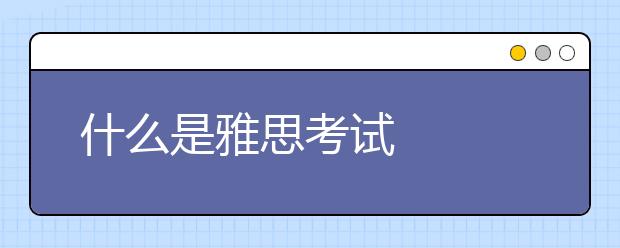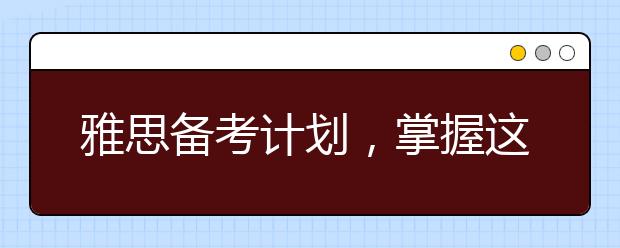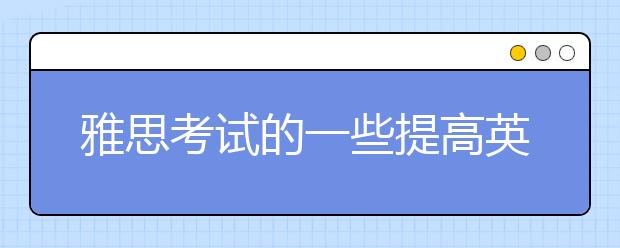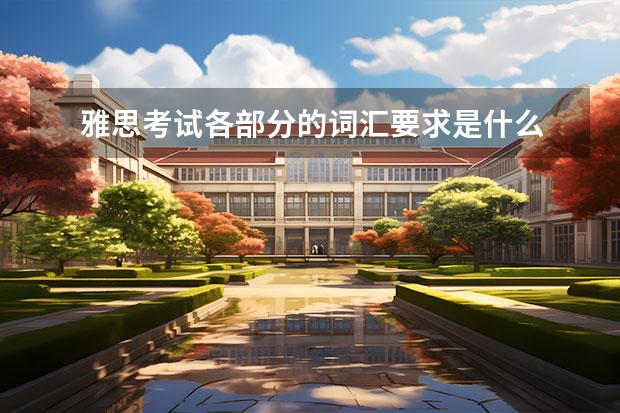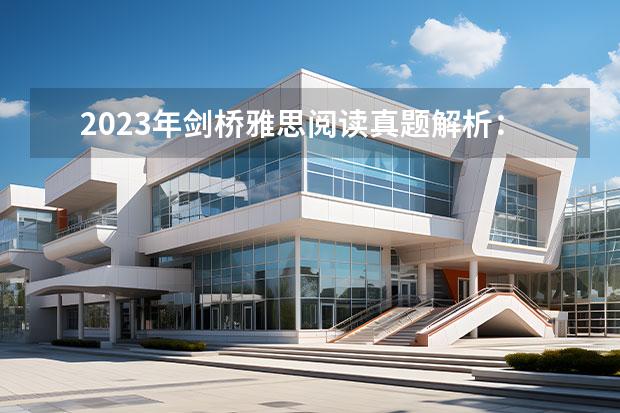今天金博宝188官网小编整理了剑桥雅思考试全真试题集9 剑桥雅思阅读AUSTRALIA’SSPORTINGSUCCESS及答案解析 剑桥雅思10 test3 阅读 答案相关内容,希望能帮助到大家,一起来看下吧。
本文目录一览:
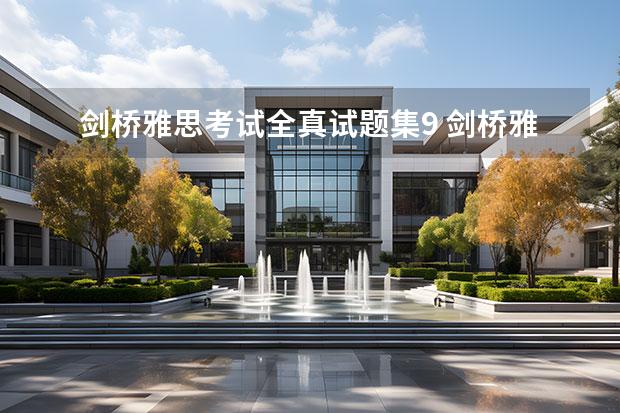
剑桥雅思考试全真试题集9
您好,我是专注留学考试规划和留学咨询的小钟老师。在追寻留学梦想的路上,选择合适的学校和专业,准备相关考试,都可能让人感到迷茫和困扰。作为一名有经验的留学顾问,我在此为您提供全方位的专业咨询和指导。欢迎随时提问!剑桥大学出版社是出版剑桥大学考试委员会外语考试部的各类考试(包括雅思)历届考试真题的唯一官方出版社。《剑桥雅思考试全真试题集9》所包含的最新雅思全真试题资料由剑桥大学考试委员会外语考试部提供,是各类雅思考生备考过程中必不可少的参考书。
前言
国 际英语语言测试系统(International English Language Testing System,即IELTS,以下称“雅思”)是受广泛认可的语言评估系统,其目的是为准备进入英语国家学习的学生或到英语国家参加非学术培训、工作或移 民人士测试英语水平。本书为广大雅思备考者客观评价自己的英文水平,提供了有力依据。
雅思考试由剑桥大学外语考试部(University of Cambridge ESOL Examinations)、英国文化协会(British Council) 与澳大利亚教育国际开发署(IDP Education Pty Limited,经由其下属公司IELTS Australia Pty Limited)联合开发并共同拥有。
欲知更多有关雅思考试的详情,考生可以到雅思考试中心索取免费的考试手册(IELTSHandbook)。
考试类型和形式
雅思考试内容涵盖听力、阅读、写作和口语四项语言技能,分为学术列(Academic)和培训类(General Training)两种考试类型。雅思考试由6部分构成。无论是学术类考生还是培训类考生都必须参加内容相同的听力和口语考试,而两类考生因其考试类型的 不同,他们的阅读和写作考试的内容也不同。
学术类:适用于计划申请国外高校本科或研究生课程的考生。
培训类:适用于计划移民、申请国外非学术培训、中学课程或出国工作的考生。
考试依据以下程序进行:
听力:4部分,共40题,30分钟。
学术类阅读:3部分,共40题,60分钟。
或
培训类阅读:3部分,共40题,60分钟。
学术类写作:2题,60分钟。
或
培训类写作:2题,60分钟。
口语:11~14分钟。
总考试时间:2小时44分钟。
听力
该部分共有四组考题,每组10题。前两组题目涉及社会课题,开始是两个人的对话,接着是一段独白。后两组题目与教育或培训课题有关,开始是最多4人的对 话,跟着是一段独白。考题类型多样化,包括:选择题、简答题、完成句子题、完成笔记/表格/图表/摘要/流程图/时间表题、为图表/设计图/地图做标记 题、分类及配对题等。考生只能听一遍录音,并且需要一边听一边记录答案。录音播完后,考生有10分钟的时间把答案写在答题纸上。
学术类阅读
该部分有三组考题,共40题。考生将阅读三篇文章,文章选自期刊、书本、杂志、报纸等。文章多为大众普遍感兴趣的课题。至少有一篇文章涉及详细的逻辑论证。考题类型多样化,包括:选择题、简答题、完成句子题、完成笔记/摘要/流程图/图表题、图解标签题、分类及配对题等,以及从一组选项中找出合适的段落标题,说明作者的观点或主张(赞成/反对/没有表明),或确认对文章内容的理解(正确/错误/没有提供答案)。
培训类阅读
该部分有三组考题,共40题。文章选自通告、广告、传单、报纸、说明书、书本、杂志等。第一组的文章与生活化英语有关,主要是测试考生对正确信息的掌握程 度。第二组着重于工作环境,文章内容涉及较复杂的句子。第三组的文章篇幅较长,结构也较为复杂,着重描写和说明而不着重于论证。
考题类型多样化,包括:选择题、简答题、完成句子题、完成笔记/摘要/流程图/图表题、做标记题、分类及配对题等,以及从一组选项中找出合适的段落标题,说明作者的观点或主张(赞成/反对/没有表明),或确认对文章内容的理解(正确/错误/没有提供答案)。
学术类写作
该部分有两道题目。我们建议考生用约20分钟完成第一题,写一篇至少150词的文章;再用40分钟完成第二题,写一篇至少250词的文章。第二题所占的分数比重是第一题的两倍。
在第一题中,考生必须根据图表或一些数据(曲线图、表格 、或图表),把有关内容写成一段文字。评估项目包括:组织能力、呈现方式、数据比较、叙述程序、描述一件物品或事物的能力,或说明一样东西工作原理的能力。
第二题中,考生必须针对一个看法、论点或问题作答。评估项目包括:提出解决方案的能力、据理说明观点的能力、对比证据和意见的能力,以及针对观点/证据/论证进行评估与提出质疑的能力。
此部分也将评估考生的文笔技巧。
培训类写作
与学术类写作类似,培训类写作也有两道题目。我们建议考生用约20分钟完成第一题,写一篇至少150词的文章;再用40分钟完成第二题,写一篇至少250词的文章。第二题所占的分数比重是第一题的两倍。
在第一题中,考生必须针对一个问题,写一封信索取信息或说明情况。评估项目包括:个人书信写作能力、索取与提供正确信息的能力、表达需要与请求、抒发爱憎感受以及发表意见与不满等能力。
第二题中,考生必须针对一个看法、论点或问题作答。评估项目包括:提供一般正确信息的能力、概述问题并提出解决方法、据理说明观点的能力,以及针对观点/证据/论证进行评估与提出质疑的能力。
此部分也将评估考生的文笔技巧。更多关于学术类和培训类写作评估的信息,包括写作评分标准(公开版),请登录雅思网站查询。
口语
该部分以考生和考官一对一的方式进行。会话时间约为11~14分钟。
考试分为三个部分:
第一部分
考生和考官先做自我介绍。接着,考生将回答有关其本身的一些个人问题,包括居住的地方、家人、工作/学业情况、嗜好以及任何其他相关的问题。这部分的会话时间是4~5分钟。
第二部分
考生将拿到一个题目和一些提示,必须针对特定题目发言。
考生有1分钟的准备时间,并可以做笔记。发言时间是1~2分钟。考生发言完毕后,考官将提出一两个问题。
第三部分
考官和考生针对比较深奥的课题进行讨论,而这些课题的主题将与第二部分的题目有关。讨论时间是4~5分钟。
口语测试部分所评估的是考生对英语会话的驾驭能力。评估项目包括:流畅度与连贯性、词汇丰富性、语法正确性以及发音是否准确。关于口语部分测评的更多信息,包括口语单项分数的解释说明,可以在雅思考试官方网站上找到。
雅思考试的评分系统
雅思考试的成绩分为9个等级。除了提供整体语言水平的总分外,雅思考试还提供听力、阅读、写作、口语四个单项测试的分数。这四项语言技能的分数同样分成9 个等级。雅思考试成绩单记录了所有项目的考试等级、考生国籍、母语和出生日期等。每一个整体语言等级(总分) 都有一段简介,扼要说明考生所达到的英语水平。以下是对9个等级分数的解释说明:
9 分 卓越使用者——能完全自如运用英语,用词准确,口语流利,沟通无障碍。
8 分 优秀使用者——能充分自如运用英语,只是偶尔语言组织不准确或不恰当。遇到不熟悉的情况可能会理解错误。能够针对复杂课题很好地进行仔细论证。
7 分 良好使用者——有能力运用英语,只是偶尔用法不准确或不恰当,有时候会理解错误。一般而言,善于理解、运用复杂语言,并能够理解详细的论证。
6 分 称职使用者——一般而言能相当有效地运用英语,不过有时候可能用法不准确或不恰当,理解有误。能够运用与理解比较复杂的句子,对熟悉领域的课题则表现更好。
5 分 普通使用者——能部分运用英语,多数时候能够明白总体意思,但可能会出许多错误。对于本身熟悉的领域,基本沟通应该不成问题。
4 分 有限使用者——只限在本身熟悉的领域运用,并只掌握基本用法。在理解和表达方面经常遇到困难。无法使用复杂句子。
3 分 极度有限使用者——唯有在非常熟悉的领域才能够进行很基本的沟通与交流。交谈经常停顿。
2 分 间歇使用者——无法进行真正的交谈。只有在熟悉领域和紧急需要时,以单词或短句传达最基本的信息。在理解书面形式和口语形式的英文方面遇到很大的困难。
1 分 非使用者——除了少数几个单词以外,基本上没有能力使用英语。
0 分 没有接受测试者——无法提供评估报告。
凡是在雅思考试中整体语言水平总分介于6.0~7.0的考生即可申请英国、澳大利亚、新西兰和加拿大、美国等国家的大学与学院的学术课程。
如何对测试练习进行评分
听力与阅读
其答案在第152页至第161页。
在听力与阅读部分,每答对1题得1分。
要求提供英文字母/罗马数字的答案
如果答案是英文字母或罗马数字,你只能填入所需的答案数量的字母或数字。举例说明:如果一个答案是要求填一个英文字母或数字,那你只能填一个;如果你提供了多个字母或数字,答案就算错。
要求提供文字或数字的答案
· 答案可以采用大写或小写。
· 括号中的文字可任意选用,这些文字虽然正确,但并非一定要使用。
· 替代性答案以斜线(/)分隔。
· 如果答案指定你必须使用一定数目的几个词与/或一个(或多个)数字,你若使用超过指定数目的答案,将会被扣分。举例说明:如果题目规定你的答案不能超过3个词,正确答案应该是“black leather coat”,而你的答案如果是“coat of black leather”,就算答错。
· 如果是填充题,你只需把正确答案写在答题纸上。比如要填充“in the...”,正确答案应该是“morning”,而你如果写“in the morning”,就算答错。
· 所有答案必须拼写正确(包括括号中的词)。
· 美国或英国的拼写方式都可以接受,本书试题答案中都有收录。
· 所有数字、日期、货币等的标准替代符号都可以接受。
· 所有标准缩写都可以接受。
· 本书试题答案中有针对个别题目提供的额外解释说明。
写作
答案样本在第162页至第173页。你不太可能为自己的写作评分。我们为部分写作题目(Task 2 in Tests 1&3, Task 1 in Tests 2&4, Task 1in General Training Test A, Task 2 in General Training Test B) 提供了标准答案(由一位雅思考官提供),答案可在书后找到。必须注意的是,我们只是提供了一种作答方式,而作答方式其实非常多。
对于其他写作题目(Task 1 in Tests 1&3, Task 2 in Tests 2&4, Task 2 in General Training Test A, Task 1in General Training Test B),我们则准备了答案样本(由多位考生所写),并提供了他们的得分与考官的评语。这些标准答案与答案样本将有助于你更好地了解写作测试的要求是什么。
成绩分析
在每一组听力与阅读测试答案的末尾,有一个图表,可以让你根据你的测试成绩评估自己的表现,以检验你是否已做好准备,可以参加雅思考试。
在分析你的成绩时,你必须注意几个要点。真实的雅思考试成绩分为两个部分:每单项测试各获得一个介于1~9分的等级分数;另外还有一个整体语言水平等级分 数,等级划分也介于1~9分。整体等级分数来自于四个单项测试的平均数。国外高校在考虑是否录取你时,除了参考你的整体语言水平等级外,他们也会留意你在 各分项测试单元的表现,以确定你是否具备一定的语言能力修读某个课程。举例说明:如果你的课程需要学生进行大量的阅读和写作,但是没有课堂授课,那么听力 成绩就没那么重要。那么,如果你的整体语言水平等级是7分,即使听力等级是5分,你还是可能被录取。不过,如果有的课程有大量课堂授课和口语指示,即使你 的整体语言水平等级是7分,听力等级只得5分的话,恐怕就不能被接受了。
你为自己的测试成绩打分之后应该会更清楚自己的听力和阅读能力,知道你自己是否已有足够条件去参加真正的雅思考试。如果你只在其中某一分项测试取得好成绩,那么你必须自行斟酌现在是否要参加雅思考试。
本书中的试题已经过审核以确保其难度与真正的雅思考试相吻合。不过我们不能保证如果你在做这些题目时取得了好成绩,你在参加真正的雅思考试时也能取得同样 的成绩。本书中的试题只能帮助你对你接下来的表现进行预测。你是否要根据该成绩来做出决定参加考试,完全取决于你自己。
各所大学对不同课程的招生条件都不尽相同,对雅思考试成绩的要求也各异。我们综合了多数大学对雅思考试成绩要求的规定给你作为参考。不过,你所申请的大学对雅思成绩的要求可能会更高或较低一些。
希望以上的答复能对您的留学申请有所帮助。留学的道路充满了无限可能,但选择和准备的过程可能也充满挑战。如果您有任何更详细的问题或需要进一步的协助,我强烈推荐您访问我们的留学官方网站 。在那里您可以找到更多专业的留学考试规划和留学资料以及一对一的咨询服务。我们的专业团队会全程陪伴您,助您圆梦海外学府。祝您留学申请顺利!
剑桥雅思阅读AUSTRALIA’SSPORTINGSUCCESS及答案解析
做好雅思的阅读题除了掌握对的 方法 ,也离不开我们日常的辛勤练习,下面我给大家带来剑桥雅思阅读AUSTRALIA’S SPORTING SUCCESS及答案解析,一起加油吧!
剑桥雅思阅读AUSTRALIA’S SPORTING SUCCESS
READING PASSAGE 1
You should spend about 20 minutes on Questions 1-13, which are based on Reading Passage 1 below.
AUSTRALIA’S SPORTING SUCCESS
A They play hard, they play often, and they play to win. Australian sports teams win more than their fair share of titles, demolishing rivals with seeming ease. How do they do it? A big part of the secret is an extensive and expensive network of sporting academies underpinned by science and medicine. At the Australian Institute of Sport (AIS), hundreds of youngsters and pros live and train under the eyes of coaches. Another body, the Australian Sports Commission (ASC), finances programmes of excellence in a total of 96 sports for thousands of sportsmen and women. Both provide intensive coaching, training facilities and nutritional advice.
B Inside the academies, science takes centre stage. The AIS employs more than 100 sports scientists and doctors, and collaborates with scores of others in universities and research centres. AIS scientists work across a number of sports, applying skills learned in one — such as building muscle strength in golfers — to others, such as swimming and squash. They are backed up by technicians who design instruments to collect data from athletes. They all focus on one aim: winning. ‘We can’t waste our time looking at ethereal scientific questions that don’t help the coach work with an athlete and improve performance,’ says Peter Fricker, chief of science at AIS.
C A lot of their work comes down to measurement — everything from the exact angle of a swimmer’s dive to the second-by-second power output of a cyclist. This data is used to wring improvements out of athletes. The focus is on individuals, tweaking performances to squeeze an extra hundredth of a second here, an extra millimetre there. No gain is too slight to bother with. It’s the tiny, gradual improvements that add up to world-beating results. To demonstrate how the system works, Bruce Mason at AIS shows off the prototype of a 3D analysis tool for studying swimmers. A wire-frame model of a champion swimmer slices through the water, her arms moving in slow motion. Looking side-on, Mason measures the distance between strokes. From above, he analyses how her spine swivels. When fully developed, this system will enable him to build a biomechanical profile for coaches to use to help budding swimmers. Mason’s contribution to sport also includes the development of the SWAN (Swimming Analysis) system now used in Australian national competitions. It collects images from digital cameras running at 50 frames a second and breaks down each part of a swimmer’s performance into factors that can be analysed individually — stroke length, stroke frequency, average duration of each stroke, velocity, start, lap and finish times, and so on. At the end of each race, SWAN spits out data on each swimmer.
D ‘Take a look,’ says Mason, pulling out a sheet of data. He points out the data on the swimmers in second and third place, which shows that the one who finished third actually swam faster. So why did he finish 35 hundredths of a second down? ‘His turn times were 44 hundredths of a second behind the other guy,’ says Mason. ‘If he can improve on his turns, he can do much better.’ This is the kind of accuracy that AIS scientists’ research is bringing to a range of sports. With the Cooperative Research Centre for Micro Technology in Melbourne, they are developing unobtrusive sensors that will be embedded in an athlete’s clothes or running shoes to monitor heart rate, sweating, heat production or any other factor that might have an impact on an athlete’s ability to run. There’s more to it than simply measuring performance. Fricker gives the example of athletes who may be down with coughs and colds 11 or 12 times a year. After years of experimentation, AIS and the University of Newcastle in New South Wales developed a test that measures how much of the immune-system protein immunoglobulin A is present in athletes’ saliva. If IgA levels suddenly fall below a certain level, training is eased or dropped altogether. Soon, IgA levels start rising again, and the danger passes. Since the tests were introduced, AIS athletes in all sports have been remarkably successful at staying healthy.
E Using data is a complex business. Well before a championship, sports scientists and coaches start to prepare the athlete by developing a ‘competition model’, based on what they expect will be the winning times.’ You design the model to make that time,’ says Mason.’ A start of this much, each free-swimming period has to be this fast, with a certain stroke frequency and stroke length, with turns done in these times.’ All the training is then geared towards making the athlete hit those targets, both overall and for each segment of the race. Techniques like these have transformed Australia into arguably the world’s most successful sporting nation.
F Of course, there’s nothing to stop other countries copying — and many have tried. Some years ago, the AIS unveiled coolant-lined jackets for endurance athletes. At the Atlanta Olympic Games in 1996, these sliced as much as two per cent off cyclists’ and rowers’ times. Now everyone uses them. The same has happened to the ‘altitude tent’, developed by AIS to replicate the effect of altitude training at sea level. But Australia’s success story is about more than easily copied technological fixes, and up to now no nation has replicated its all-encompassing system.
剑桥雅思阅读AUSTRALIA’S SPORTING SUCCESS题目
Questions 1-7
Reading Passage 1 has six paragraphs, A-F.
Which paragraph contains the following information?
Write the correct letter, A-F, in boxes 1-7 on your answer sheet.
NB You may use any letter more than once.
1 a reference to the exchange of expertise between different sports
2 an explanation of how visual imaging is employed in investigations
3 a reason for narrowing the scope of research activity
4 how some AIS ideas have been reproduced
5 how obstacles to optimum achievement can be investigated
6 an overview of the funded support of athletes
7 how performance requirements are calculated before an event
Questions 8-11
Classify the following techniques according to whether the writer states they
A are currently exclusively used by Australians
B will be used in the future by Australians
C are currently used by both Australians and their rivals
Write the correct letter, A, B or C, in boxes 8-11 on your answer sheet.
8 cameras
9 sensors
10 protein tests
11 altitude tents
Questions 12 and 13
Answer the questions below.
Choose NO MORE THAN THREE WORDS ANDIOR A NUMBER from the passage for each answer.
Write your answers in boxes 12 and 13 on your answer sheet.
12 What is produced to help an athlete plan their performance in an event?
13 By how much did some cyclists’ performance improve at the 1996 Olympic Games?
剑桥雅思阅读AUSTRALIA’S SPORTING SUCCESS答案
Question 1
答案:B
关键词:exchange of expertise, between different sports/collaborate, across a number of sports
定位原文:B段第2、3句“...and collaborates with… a number of sports …”
解题思路: 题干中讲到不同体育领域的专业知识交流正好跟原文中跨不同体育专家之间的合作相对应,理解意思即可容易找到正确答案。
Question 2
答案:C
关键词: visual imaging/3D, image
定位原文: C段第6句: “...shows off the prototype of a 3D analysis …”
解题思路: 通过题干中的视频成像可以很容易找到原文中对应的3D和成像。
Question 3
答案:B
关键词: a reason for narrowing/ can’t waste time
定位原文: B段最后1句: “We can’t waste our time looking…”
解题思路: 题目中的research activity和原文中的scientific questions 属于同义表达,定位答题区域,发现此句话所要表达的意思是不在一些飘渺的、不切实际的科学问题上浪费时间,也就是说要缩小研究的范围。
Question 4
答案:F
关键词:AIS ideas reproduce/ copying
定位原文: F段第1句话 “Of course, there’s nothing…”
解题思路: 题干中的reproduce是复制的意思,之后从 文章 中发现 句子 有复制copying,即可以直接定位。
Question 5
答案:D
关键词:Obstacle, investigated/ impact, monitor
定位原文: D段第6句“... to monitor heart rate…”
解题思路: 题干提到理想成绩的障碍是如何被调查研究的,而读到对应句子之后看到正好是sensors(传感器)对于运动员跑步的impact(影响)进行研究的仪器,而且obstacles和impact对应。
Question 6
答案:A
关键词:Overview, funded support finance
定位原文: A段倒数第2句 “...finances programmes of excellence…”
解题思路: finances是解题关键,意思为资助,正好跟题干中funded support表达了相同的义项,直接对应。而且之后一句话提及以上项目所提供的服务和建议,可以确信答案。
Question 7
答案:E
关键词:Calculated before an event/ using data, well before a championship
定位原文: E段第1句、第2句 “Using data is a complex business. Well before a championship, ...”
解题思路: 首先通过well before a championship和文章中before an event定位到E段, 之后发现后面提及的“竞争模型”作用就是计算时间和速率,因此内容对应上calculate,此时可断定答案的位置。
Question 8
答案:A
关键词: digital cameras
定位原文: C段倒数第3句: “..SWAN system now used in Australian national…”
解题思路: 前一句已经提到该系统已广泛应用于澳大利亚各项全国赛事之中,而没有提到其他国家,因此可以判断应该只有澳大利亚人在使用。
Question 9
答案:B
关键词:sensor
定位原文: D段第7句:“...With the Cooperative Research Centre for Micro…”
解题思路: 找到相同对应词sensor,读其前后的句子,发现有 Melbourne,断定是澳大利亚人的发明。之后要特别留心动词develop运用现在进行时,表示正在开发;而且注意之后的定语从句采用了将来时,所以可以断定此发明还没有完成,应该属于将来的成果。因此选择B。
Question 10
答案: A
关键词:protein
定位原文: D段倒数第4句: “… AIS and the University of Newcastle…”
解题思路: 非常容易在前面第一句话中找到跟题目protein tests所对应的词语a test ...protein。之后细读前后句,发现后面一句话对于此项科技成果的受益者文章中只提到AIS运动员,即澳大利亚体育学院的运动员,隶属于澳大利亚,所以应该选择A。
Question 11
答案:C
关键词: altitude tent
定位原文: F段倒数第2句: “The same has happened to the ‘altitude tent ’…”
解题思路: 文章中很容易找到用引号括起来的题目中的名词 短语 ,因此只要细心读原句,就会发现开头的‘The same has happened...’同样的事情也发生在……根据 经验 应该顺着文章向上追溯,发现跟‘altitude tent’相同情况的是1996年奥运会上澳大利亚人受益的流线型散热运动服现在全世界都在用。因此 ‘altitude tent’也被世界各国应用。所以答案应该选择C。且根据此段话大意可以了解文章只提到两种研究成果被别国运用,即髙原帐蓬和流线型散热服。所以可以间接判断前三项成果是由澳大利人独享的。
Question 12
答案: (a)competition model
关键词: help an athlete plan, produced / prepare the athlete by, developing
定位原文: E段第1句“Using data…”
解题思路: Help an athlete plan their performance 对应上prepare the athlete by之后,要认真研究题目所问的是what is produced,断定所作答案必定要填一个名词。因此要细读原文发现有单词developing恰与produced相对应,中文意思是“开发”,则答案必定是开发之后的名词。
Question 13
答案: (by)2 percent/%
关键词: 19% Olympic Games, cyclists, improve
定位原文: F段第3句“At the Atlanta…”
解题思路: 分析问句是 ‘By how much... improve’,意思为“提高了多少”,可以判断出答案需要写一个数字。因此仔细阅读相关语句找到 sliced as much as two per cent off cyclists ‘and rowers’ time。很快就可以找到数字百分之二
。
剑桥雅思10 test3 阅读 答案
答案解析:1. 选ii。定位到第二段第一句话:Tourism in the mass form as we know it today is a distinctly twentieth-century phenomenon. 表明就我们所知,广义的旅游业是一个二十世纪的现象。选项中的mass tourism与原文中的tourism in the mass form是同义替换。
2. 选i。定位到第三段第一句话:Tourism today has grown significantly in both economic and social importance. 即目前旅游业对经济及社会都非常重要。选项中的significance替换原文的importance。
3. 选v。定位到第四段第一句话:However, the major problems of the travel and tourism industry that have hidden or obscured its economic impact are the diversity and fragmentation of the industry itself. 意思是旅游业的主要问题是这个产业本身的多样性和分散性,这使得其经济影响变得不那么明显。选项中的difficulty,effects分别替换原文的problems和impact。
4. 选vii。定位到第五段第一句话:Once the exclusive province of the wealthy, travel and tourism have become an institutionalised way of life for most of the population. 表明旅游业曾经是富人们的特权,而现在已经变成大多数人们习以为常的一种生活方式了。选项中的world,impact替换原文的most of the population, institutionalised。
Questions 5-10 判断题
5. The largest employment figures in the world are found in the travel and tourism industry.
6. Tourism contributes over six per cent of the Australian gross national product.
7. Tourism has a social impact because it promotes recreation.
8. Two main features of the travel and tourism industry make its economic significance difficult to ascertain.
9. Visitor spending is always greater than the spending of residents in tourist areas.
10. It is easy to show statistically how tourism affects individual economies.
答案解析:
5. 选TRUE。定位到第三段第三句话: According to the World Travel and Tourism Council (1992), ‘Travel and tourism is the largest industry in the world on virtually any economic measure including value-added capital investment, employment and tax contributions’。意思是旅游业是全世界最大的行业,不管是用哪种经济学估算,其中包括资本增值投资,就业及税收贡献。题目中的figures替换原文measure。
6. 原文没有提到Australian gross national product这个概念,所以选择NG。
7. 原文没有提到recreation这个概念,所以选择NG。
8. 选TRUE。定位到第四段第一句话:However, the major problems of the travel and tourism industry that have hidden, or obscured its economic impact, are the diversity and fragmentation of the industry itself. 意思是旅游业的主要问题是这个产业本身的多样性和分散性,这使得其经济影响变得不那么明显。题目中的two main features指代原文的diversity and fragmentation。
9. 原文没有提到visitor spending 和residents’ spending的比较关系,所以选择NG。
10. 选FALSE。定位到第四段倒数第二句,原文表明this problem has made it difficult ...to estimate the contribution it makes, 即估算旅游业对经济的贡献很困难,所以选FALSE。
Questions 11-13 句子填空题
11. In Greece, tourism is the most important ________.
12. The travel and tourism industry in Jamaica is the major ______ .
13. The problems associated with measuring international tourism are often reflected in the measurement of _______ .
答案解析:
11. 填source of income/home。定位到最后一段的第三句: For example, tourism is the major source of income in Bermuda, Greece, Italy, Spain, Switzerland, and most Caribbean countries. 说明旅游业在以下国家都是收入的主要来源,题目中的most important替换原文的major。
12. 填employer。定位到最后一段的第四句: In addition, Hawkins and Ritchie, quoting from data published by the American Express Company, suggesting that the travel and tourism industry is the number one ranked employer in the Bahamas, Brazil, Canada, France, (the former) West Germany, Hong Kong, Italy, Jamaica, Japan, Singapore. 说明旅游业在一下国家是最需要聘用雇员的行业,题目中的major替换原文的number one ranked。
13. 填domestic industry。定位到最后一段的最后一句: In many cases, similar difficulties arise when attempts are made to measure domestic tourism. 说明测量估算国内旅游业非常困难,题目中的measurement, problems替换原文的measure, difficulties。
以上就是剑桥雅思考试全真试题集9 剑桥雅思阅读AUSTRALIA’SSPORTINGSUCCESS及答案解析 剑桥雅思10 test3 阅读 答案全部内容,更多相关信息,敬请关注金博宝188官网。
